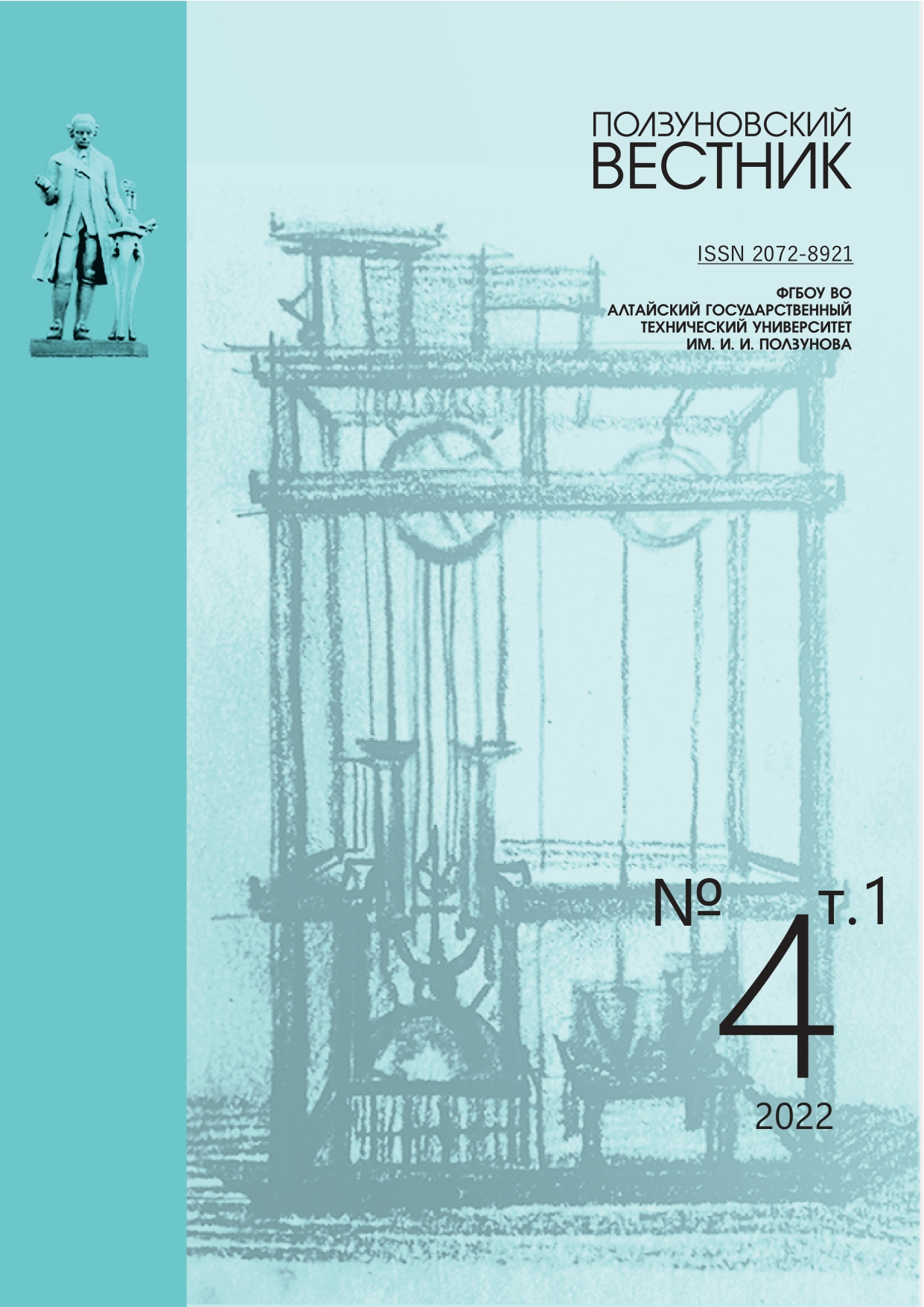Formation of flows of varietal baking triticale flour, taking into account cumulative ash content curves
DOI:
https://doi.org/10.25712/ASTU.2072-8921.2022.04.005Keywords:
тритикале, помол, мука, выход, зольность, белизна, кумулятивные кривые зольностиAbstract
The results of studies of the process of formation of flows of varietal baking triticale flour are presented, taking into account the cumulative ash content curves. Triticale is a new type of cereal with high nutritional properties. The chemical composition and biochemical properties of triticale grains are typical for cereals. It has a high content of carbohydrates and protein, varying over a wide range depending on growing conditions. The protein content in triticale grain exceeds, on average, 2% protein content in wheat and 4% protein content in rye and is at the level of 12%. According to the fractional composition, triticale proteins mainly occupy an intermediate position between the proteins of rye and wheat grains. In terms of protein content, it surpasses not only rye grain, but also soft wheat grain. In the studies conducted at the Department of Grains, Baking and Confectionery Technologies of the Federal State Budgetary Educational Institution of Higher Education "MGUPP", samples of triticale grains of the Donslav, Skolot, Topaz, Zymogor, Tribun and Vokaliz varieties were used as one of the promising and little studied varieties. The presence of 2 or 3 stages of the formation of triticale flour was established, which is quite clearly seen from the graphs of cumulative curves. In addition, statistical analysis showed the reliability of the presentation of the cumulative curve in the form of two or three linear stages, which ranged from 92% to 98%. Based on the analysis of cumulative ash curves, it was found that the varieties of triticale grains "Donslav", "Topaz" and "Tribun" have excellent flour-grinding properties, the varieties of triticale "Skolot" have good flour-grinding properties, and the varieties of triticale grains "Kornet" and "Vokaliz" have satisfactory flour-grinding properties.
References
Биохимическая характеристика новых сортов тритикалевой муки / И.С. Витол [и др.]. // Хлебопродукты. 2016. № 2. С. 42-43.
Витол И.С. Мелешкина Е.П., Кандроков Р.Х. Продукты переработки зерна тритикале как объект для ферментативной модификации // Хранение и переработка сельхозсырья. 2016. № 9. С.14-16.
Bona L., Acs E., Lantos C., Purnhauser L., Lango B., Tomoskozi S. (2013) Human utilization of triticale: technological and features, milling and baking experiments. In: Abstracts 8th international triticale symposium. Ghent. Belgium: 46.
Использование тритикалевой муки в хлебопечении / Асеева Т.А. [и др.]. // Достижения науки и техники АПК. 2018. 32 (5). С. 81-88. DOI: 10.24411/0235-2451-2018-10521.
Badea A., Eudes F., Salmon D., Tuvesson S., Vrolijk A., Larsson C. T., Caig V., Huttner E., Kilian A., Laroche A. 2011. Development and assessment of DArT markers in triticale. Theor Appl Genet. 122:1547–1560.
Fischer S., Möhring J., Maurer H. P., Piepho H. P., Thiemt E. M., Schön C. C., Melchinger A. E., Reif J. C. (2009) Impact of genetic divergence on the ratio of variance due to specific vs. general combining ability in winter triticale. Crop Sci. 49(6):2119–2122.
Kalnina S., Rakcejeva T., Kunkulberga D., Galoburda R. Rheological properties of whole wheat and whole triticale flour blends for pasta production. Agronomy Research. 2015. 13 (4). pp. 948-955.
Кандроков, Р.Х., Панкратов Г.Н. Технология переработки зерна тритикале в крупу типа «манная» // Хлебопродукты. 2017. № 1. С. 52-53.
Мукомольные свойства новых сортов тритикале / Р.Х. Кандроков [и др.]. // Хранение и переработка сельхозсырья. 2021. С. 38-51. https://doi.org/10.36107/spfp.2021.145.
Alheit K. V., Mauer H. P., Reif J. C., Tucker M. R., Hahn V., Weissmann E. A., Würschum T. 2012. Genome-wide evaluation of genetic diversity and linkage disequilibrium in winter and spring triticale (×Triticosecale Wittmack). BMC Genomics 13:235.
Летяго Ю.В., Белкина Р. Разработка рецептур хлеба с добавлением ячменной муки и тритикале. Вестник КрасГАУ. 12(153). 2019. С. 176-182. DOI: 10.36718/1819-4036-2019-12-176-182.
Максимчук Б.М., Колкунова Г.К., Мосолова Н.М. «Исследование тритикале для переработки в хлебопекарную муку» // Мукомольно-элеваторная промышленность. 1980. № 5. С. 31-35.
Панкратов Г.Н., Мелешкина Е.П., Кандроков Р.Х. Технологические свойства новых сортов тритикалевой муки // Хлебопродукты. 2016. № 1. С. 60-62.
Кандроков Р.Х., Стариченков А.А., Штейнберг Т.С. Влияние ГТО на выход и качество тритикалевой муки // Хлебопродукты. 2015. № 1. С. 64-66.
Панкратов, Г.Н., Кандроков Р.Х. Исследование процесса обогащения крупок при сортовом помоле зерна тритикале // Пищевая промышленность. 2017. № 7. С. 30-33.
Тритикале (технологии переработки) / Е.П. Мелешкина [и др.]. / Монография / под ред. Е.П. Мелешкиной. М.: Изд-во ФЛИНТА. 2018. 188 с. ISBN 978-5-9765-3813-9.
Панкратов Г.Н., Кандроков Р.Х., Щербакова Е.В. Процесс измельчения зерна тритикале // Хлебопродукты. 2016. № 10. С. 59-61.
Оценка свойств муки из зерна тритикале с использованием системы Миксолаб / Д.Г. Туляков [и др.]. // Хранение и переработка сельхозсырья. 2017. № 1. С. 20-23.
Dhaliwal S.S., Ram H., Mavi G.S., Shukla A.K. Zinc biofortification of bread wheat, triticale, and durum wheat cultivars by foliar zinc fertilization. Journal of Plant Nutrition. 2019. 42 (8). pp. 813-822. DOI: 10.1080/01904167.2019.1584218.
Góral H. (2013) Male fertility of winter triticale depending on the cytoplasm and male parent. (In polish, english abstract). Bulletin Plant Breed Acclimat Inst. 269:15–20.
Kandrokov R.H., Pankratov G.N., Meleshkina E.P., Vitol I.S., and Tulyakov D.G. Effective technological scheme for processing triticale grain into high-quality baker’s grade flour. Foods and Raw Materials. 2019. vol. 7, no. 1. pp. 107-117. DOI: 10.21603/2308-4057-2019-1-107-117.
Meleshkina E.P., Pankratov G. N., Vitol I. S., Kandrokov R. H., and Tulyakov D. G. Innovative trends in the development of advanced Triticale grain processing technology. «Foods and Raw materials», 2017, vol. 5, no. 2, pp. 70–82.
Downloads
Published
How to Cite
Issue
Section
License
Copyright (c) 2022 Roman Kh. Kandrokov, Margarita E. Maar, Sergey N. Akhtanin

This work is licensed under a Creative Commons Attribution 4.0 International License.















 .
. This work is licensed under a
This work is licensed under a 
